SAAF Museum Practice day October 2019
By Willie Bodenstein

A tribute to the Friends of the Museum
Very few of the visitors to the SAAF Museum in Pretoria, Cape Town and Port Elizabeth probably know that if it wasn't for the dedicated support of a non-profit organization, the Friends of the SAAF Museum (FSAAFM), the museum would probably have had to close it gates a long time ago.
The Friends are a voluntary non-profit organisation run by civilians dedicated to the preservation and display of the history and aircraft of the South African Air Force (SAAF). Membership of the Friends is open to all. Although they provide support to the SAAF Museum, the Friends do not receive any funds from the SAAF or the government.
The Friends are primarily concerned with providing the Museum with support in three areas including fund-raising, maintenance and restoration work.
The FSAAFM Swartkop Branch currently has multiple ongoing projects, which include the restoration to Smithsonian static condition of a Supermarine Spitfire Mk IX and the polishing of a 1 squadron Canadair Mk 6 Sabre. Many of their ongoing projects aren't on the Museum aircraft themselves but rather on the displays found at the Museum.
Spitfire restoration project:
The Spitfire restoration project is a project to restore a Spitfire Mk IX that unfortunately crashed at an air show in May 2000 due to an engine failure. The FSAAFM has been tasked with managing the restoration project as well as generating funds, so that this beautiful warbird can be restored to her former glory. The project leader is Ian Grace.
QR coded display board project:
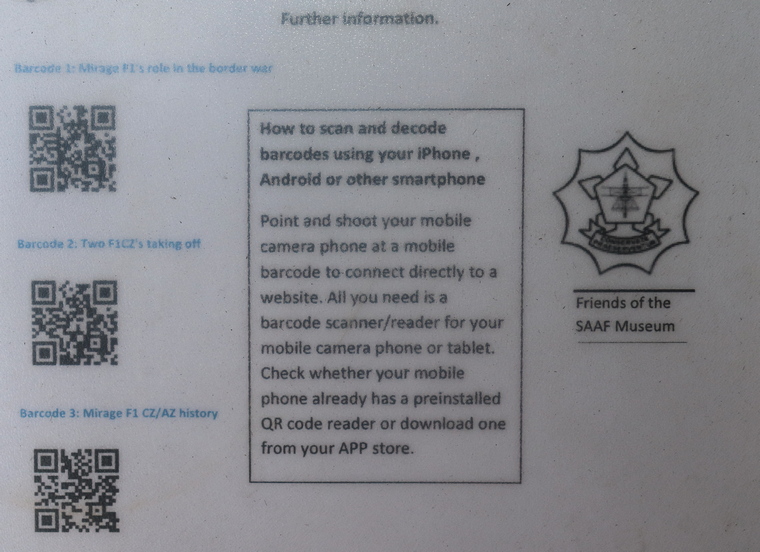
This project involves adding archived footage of SAAF Museum aircraft located on Youtube on the display board for every aircraft so that visitors to the Museum can have a more interactive experience by scanning a QR code on their smartphones and learning more about displays and aircraft. The project leader is Matthew Olivier.
Sabre polishing Project:
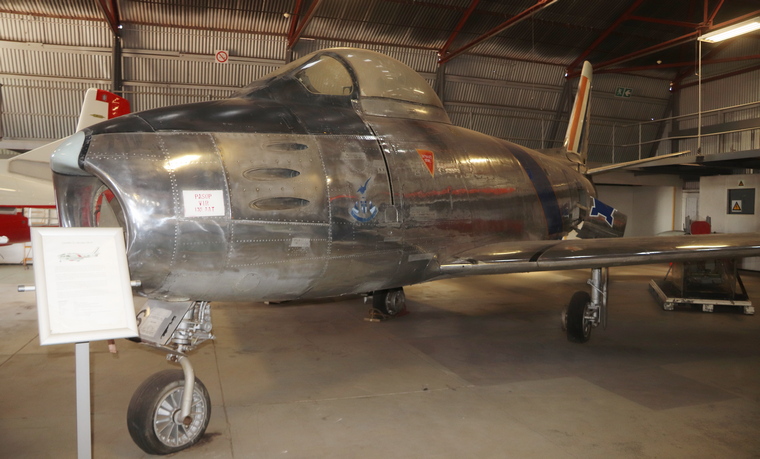
This is one of our more hands-on projects along with the Spitfire restoration. It involves the removal and polishing of major body panels, the re-stencilling of insignia and the replacement of corroded screws and fasteners with new stainless-steel ones. The project leader is Montagu Thorne.
Smuts Ventura:
This project involves the restoration of the Ventura to static display, once the personal aircraft of former South African Prime Minister Jan Smuts. Smuts also served as a field-marshall during the Second World War and helped form both the RAF and SAAF along with Pierre Van Ryneveld, who was the first chief of the South African Air Force. The project leader for this project is Louis le Lagadec.
Sikorsky S-51 Restoration project:
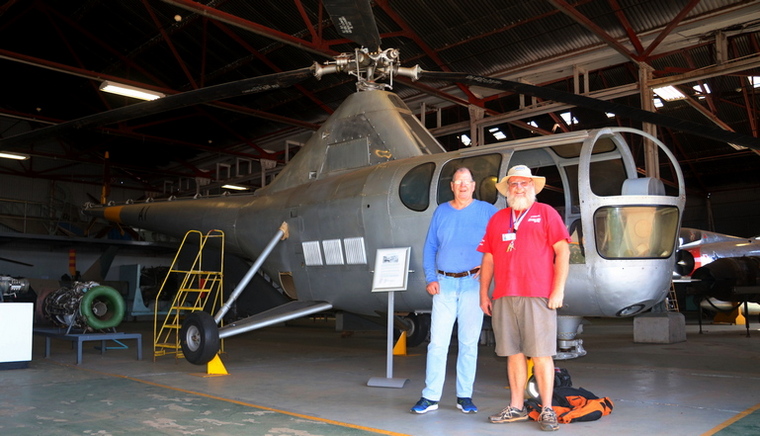
Brain Baxter and Phil Scallan posing by the Sikorsky
This project involves restoring the Sikorsky S-51 on static display at the Swartkop branch of the SAAF Museum. Missing panels are being replaced, and eventually the perspex windows in the cockpit will be replaced. The project leader for this project is Brian Baxter.
The FSAAFM Cape Town Branch is currently busy with several projects, most notably the restoration of Buccaneer 416.
Buccaneer restoration project:
The Buccaneer restoration project is a very hands on project currently underway at the Cape Town branch of the SAAF museum. The work involves physically restoring the aircraft for static display so that the aircraft can be seen once more by visitors.
The Port Elizabeth branch of the FSAAFM is currently involved with several projects including the restoration of a Buccaneer flight simulator, a Cessna, a Bofors cannon and a World War 2 Airspeed Oxford aircraft.
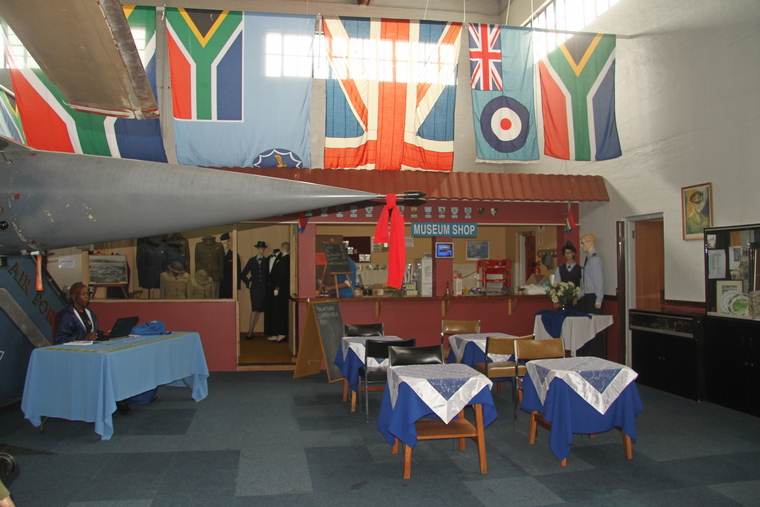
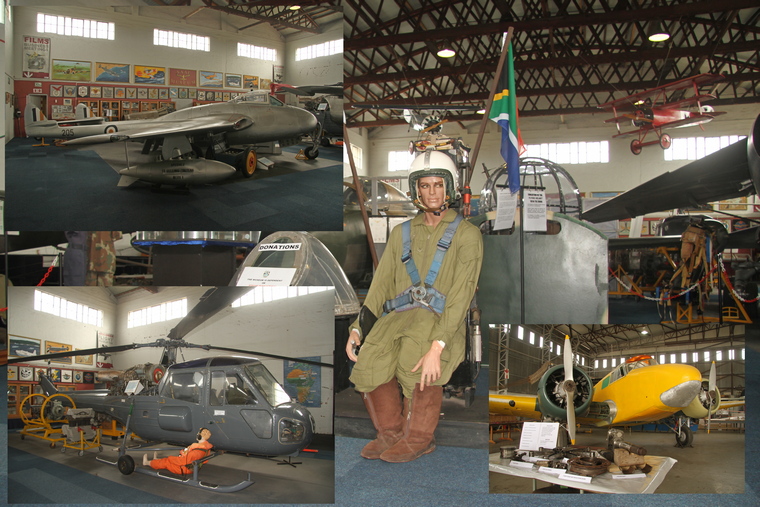
Buccaneer flight simulator:
The Buccaneer flight simulator project involves restoring it to a running state.
Notable museum static displays-The Boeing 707
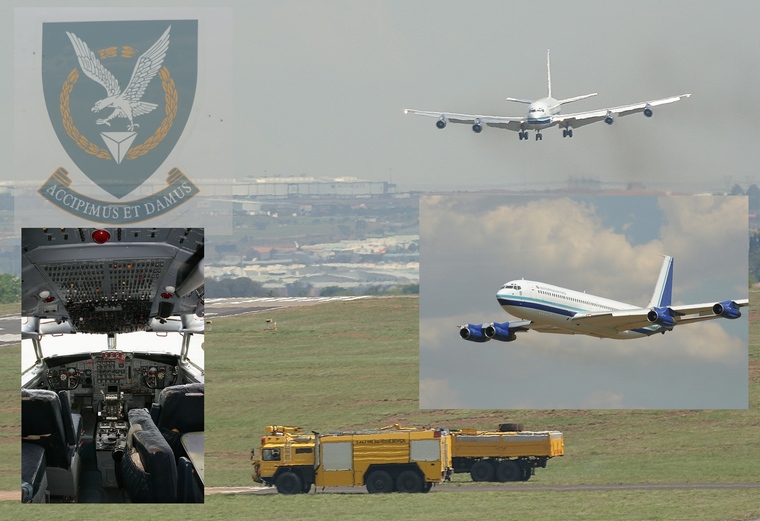
2 November 2007 landing at AFB Zwartkop
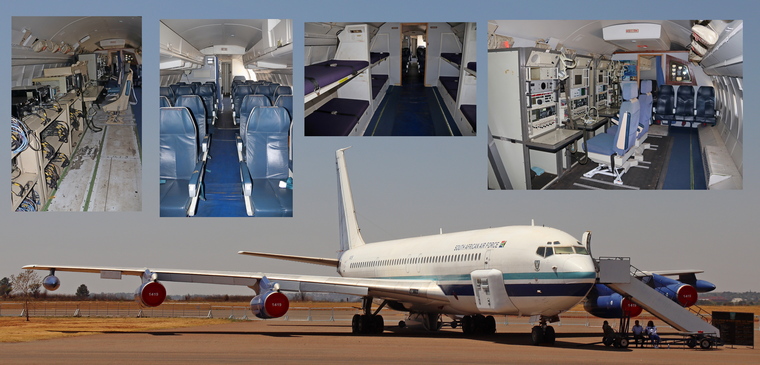
For a small donation one is allowed inside the 707
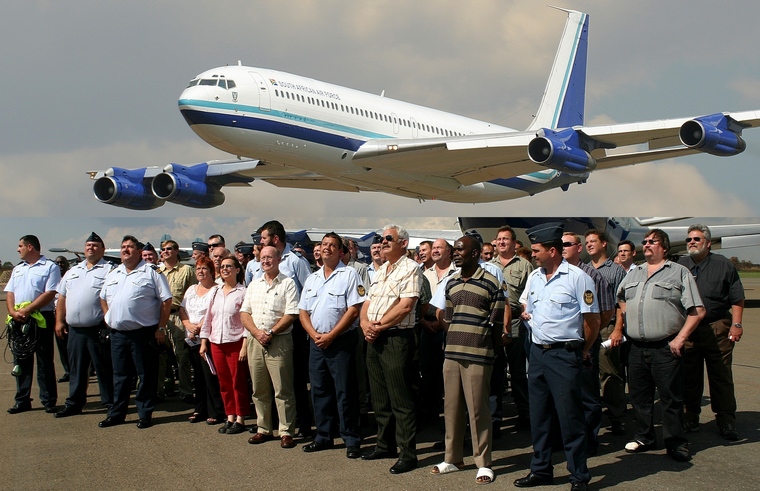
SAAF staff and others that were involved in the project
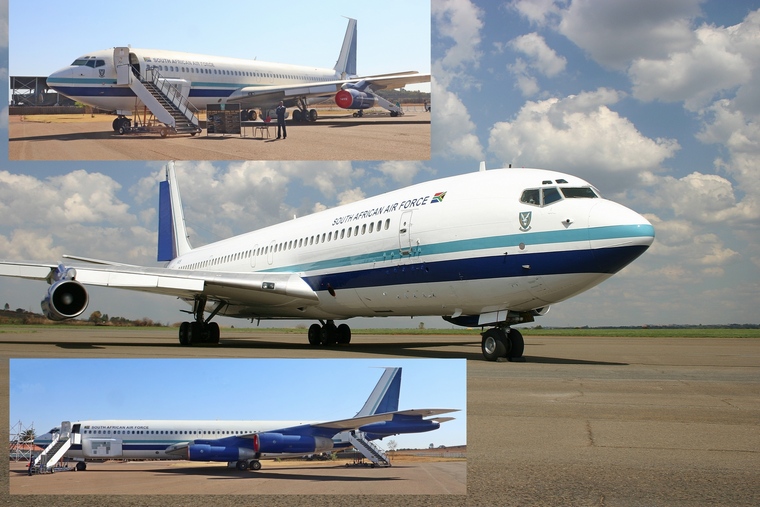
In March 1982, the SAAF acquired three Boeing 707's. The acquisition was the result of a ten-year project undertaken to provide the SAAF with a dedicated air-to-air refueling capability. Tasked with the responsibility was the reformed 60 Squadron based at AFB Waterkloof.
The squadron provided a highly effective force multiplier to the Buccaneers of 24 Squadron, 1 Squadron's Mirage F1AZ's, Cheetah E's of 5 squadron and continued to do so for 2 Squadron's Cheetah C and D variants.
The fleet grew to five aircraft with the acquisition of two more Boeings in 1990 and 1992 respectively. An electronic warfare and early warning capability were added to the unit's primary responsibility.
With the reduction of a potential threat against South Africa, 60 Squadron's duties were expanded to include both a transport and a humanitarian role. Operations wound down with the last operational Boeing 707 flight flown on 10 July 2007 to Bujumbura, Kinshasa and Kindu. Aircraft 1415 was flown to AFB Makhado on 3 October 2007 and 1419 was flown to the SAAF Museum, Swartkop, on 2 November 2007.
Notable museum flying participation on the day
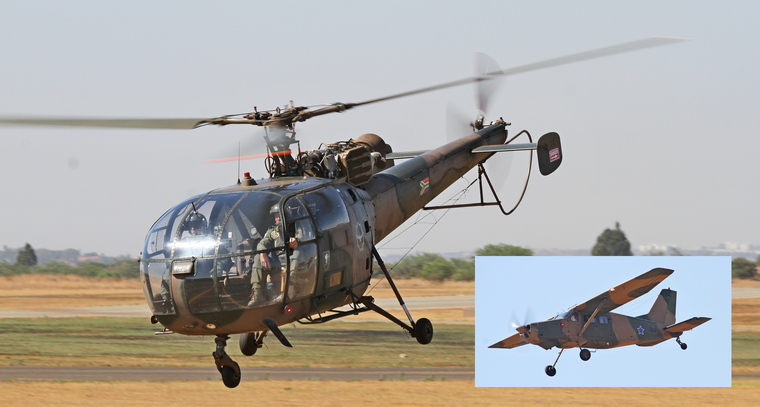
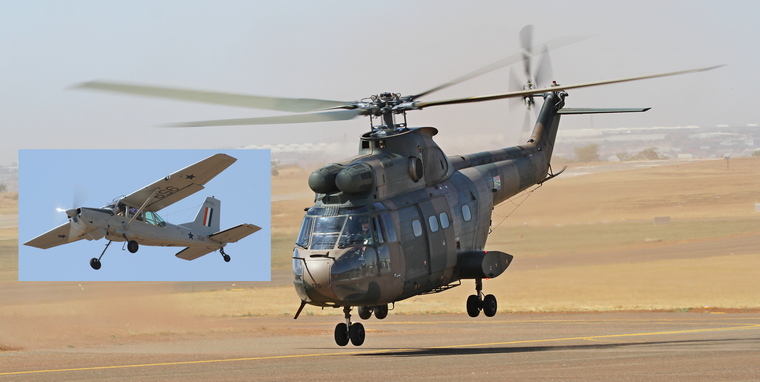
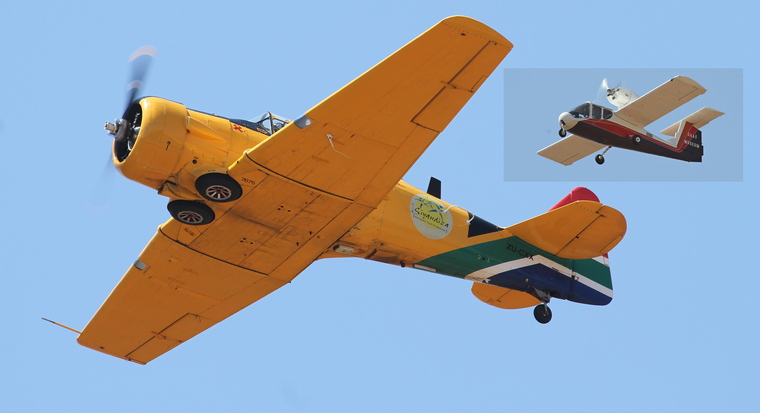
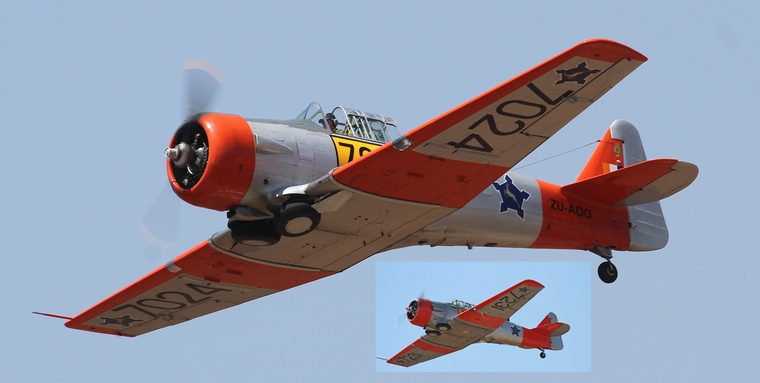
The SAAF Golden Eagles Parachute display team
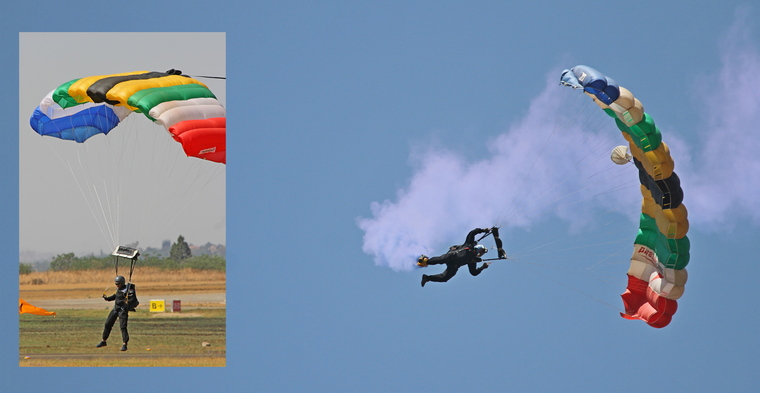
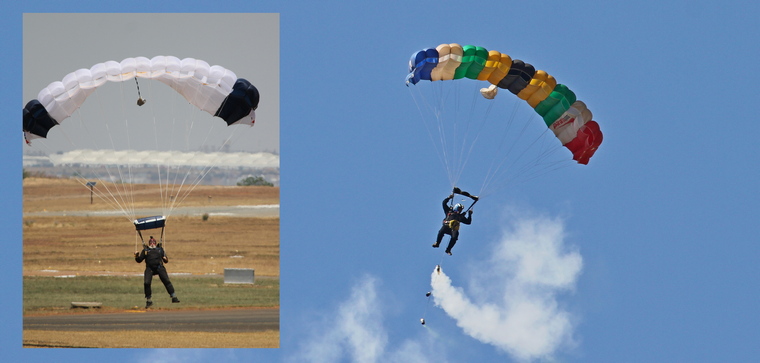
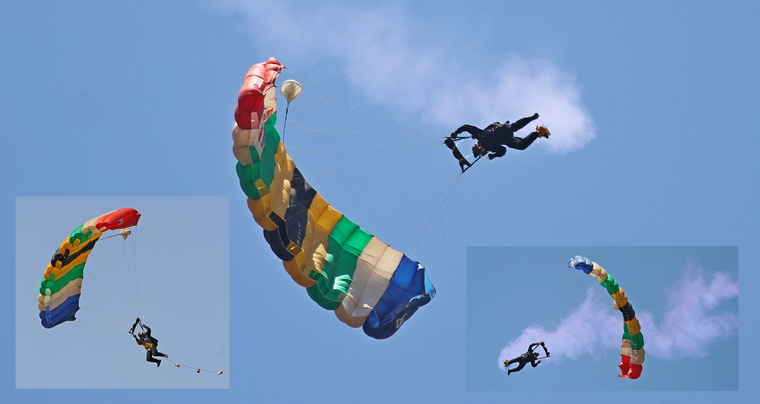
The Zwartkop Scale Modelers Club
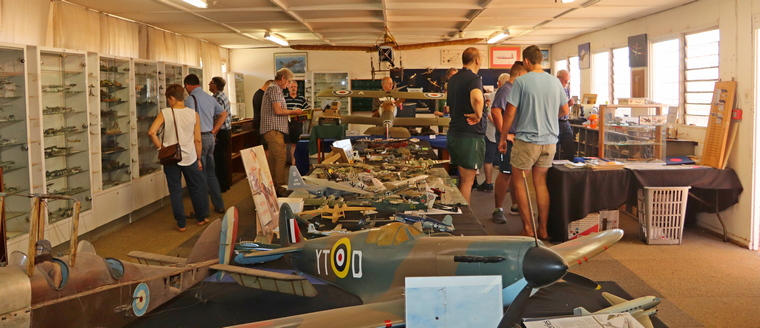
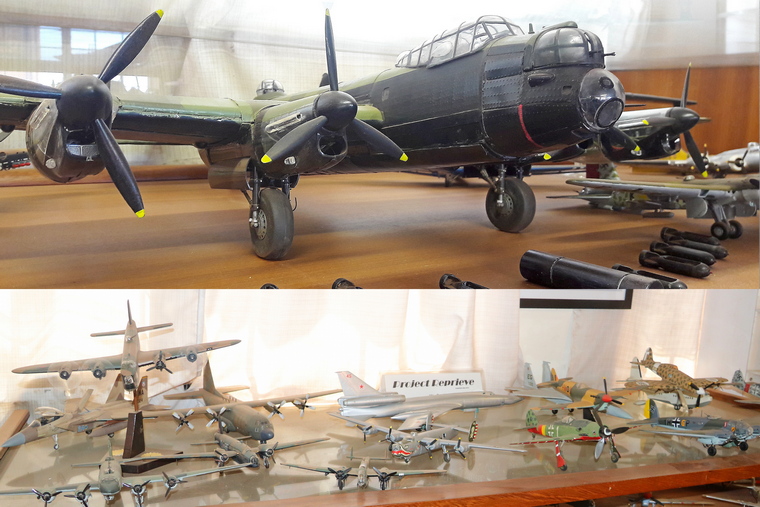
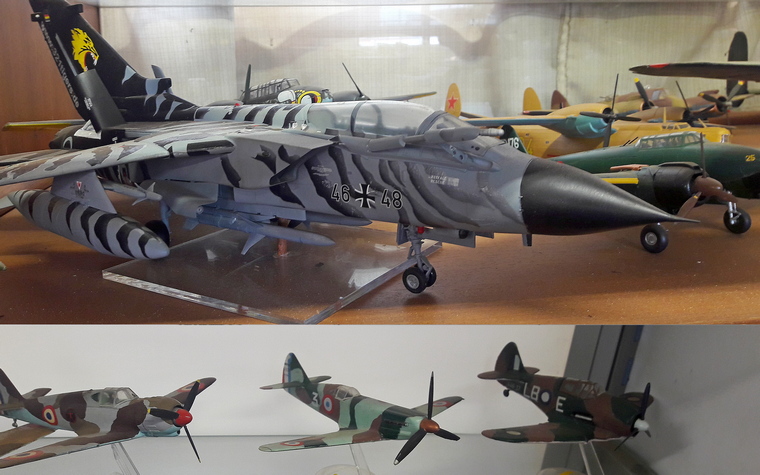
The club, which shares premises with the Air Force Museum, is open to members of the public from 12pm to 3 pm every first Saturday of each month. This coincides with the Museums open fly days. The club is affiliated with The Friends of the Museum and members aid the museum in looking after museum models that are on display.
Ian Reeds' Griffon Engine
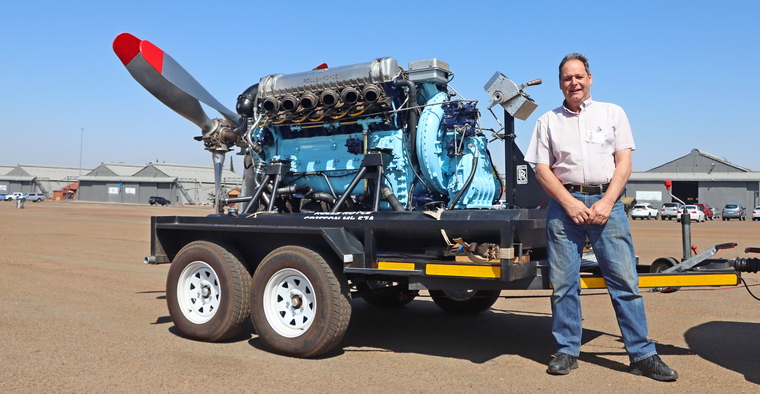
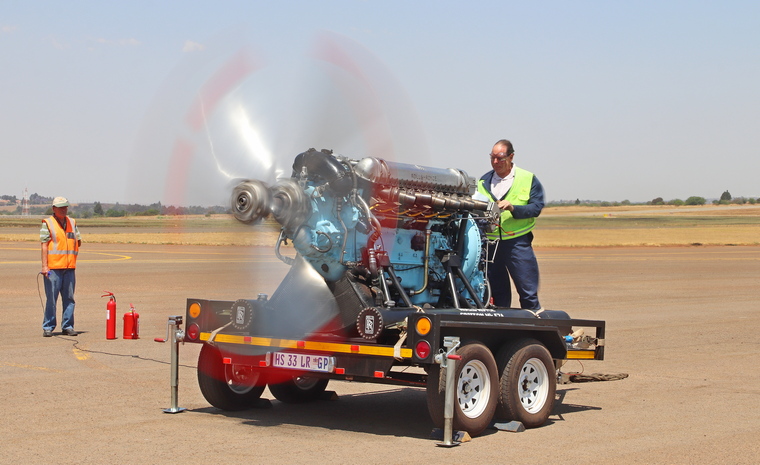
Having debuted his immaculately restored Rolls Royce Griffon engine at the SAAF Museum Swartkop Airshow a couple of weeks ago, Ian Reeds was back at the museum for the practice day.
Design work on the Rolls-Royce Griffon 37-litre (2,240 cu in) capacity, 60-degree V-12, liquid-cooled aero engine started in 1938 and 8,108 were built before production was ceased in 1955. It the last in the line of V-12 aero engines to be produced by Rolls-Royce.
Ian's Griffon unit was one of the 8,108. It was one of four that powered an Avro Shackleton which was delivered to the SAAF as 1717 in October 1957. Modified to drive the contra-rotating propellers of the Shackleton, the Griffon developed 2,340 hp (1,745 kW) at 750 ft (230 m) and 2,100 hp (1,565 kW) at 12,250 ft (3,740 m).
Shackleton 1717 was for many years displayed at the Midmar Transport Museum. It was eventually stripped and the engines sold separately. Ian acquired his in March of 2015 and it took three years of blood, sweat and tears before he started it on 28 March 2018.
As expected, the Griffon is a thirsty beast, rated at 4 litres of fuel at idle per minute. Oil is burned at between 4 and 13 liters an hour. The oil pump delivers 90 liters a minute, the capacity of the reservoir twice a minute.
When Ian bought the engine, it came with the original de Havilland 4-meter diameter propellers. He had to cut them down to around 1.2 meters due to the lack of available parts and they are now fixed and cannot be feathered.
Ian has been invited, and has accepted, the invitation to display the Griffon at the EAA's Sun 'n Fun which will take place at the Brits Airfield from the 8th to the 10th of November.
Some of the open-air static displays

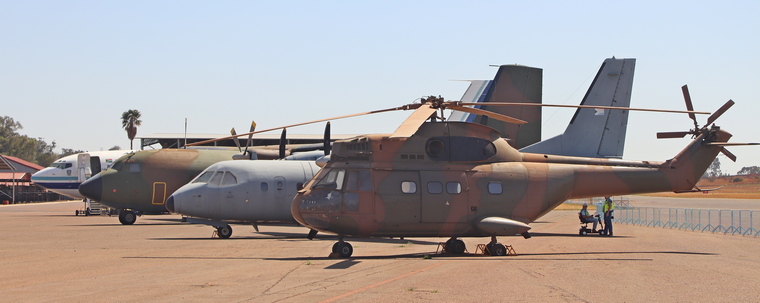
For a measly donation of R20.00, the SAAF Museum remains one of the best value for money venues to visit and to spend a morning.
|
                   |























